Trees, Shrubs and Woody Vines
Media

Species Types
Scientific Name
Fraxinus americana
Description
White ash leaves turn shades of yellow and purple in fall, and that is one reason it has been a popular landscaping tree. Many birds and mammals feed on the paddle-shaped seeds.
Media
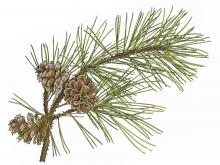
Species Types
Scientific Name
Pinus echinata
Description
Existing in thousands of acres of nearly pure stands, shortleaf pine was once the dominant tree in much of the Missouri Ozarks. Today, Missouri’s only native pine tree is recovering from the extensive logging that had exhausted its old-growth stands by the 1920s.
Media

Species Types
Scientific Name
Juniperus virginiana
Description
By far the most common native conifer in the state, eastern red cedar is useful for its aromatic, red wood and beloved for its greenery, its resinous blue “berries,” and the spicy odor it lends the outdoors.
Media
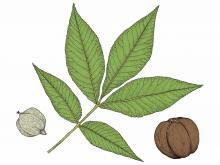
Species Types
Scientific Name
Carya ovata
Description
Many Missouri trees are quite useful, and shagbark hickory is a great example. Its wood makes excellent, slow-burning charcoal, its nuts are edible, and its wood is used for many implements. Wildlife from moths to squirrels to bats appreciate shagbarks, too!
Media

Species Types
Scientific Name
Juglans cinerea
Description
Butternut, or white walnut, is closely related to the more common black walnut. Both have delicious edible nuts, and both are valued for their wood. Butternut, however, is declining due to a usually fatal fungal disease.
Media
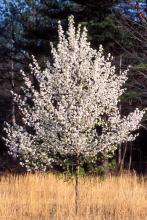
Species Types
Scientific Name
Pyrus calleryana
Description
'Bradford', a type of Callery pear, has been hugely popular in landscaping, but it can escape and hybridize with relatives. Alarmingly, it has become an invasive plant. Learn more about this problem tree.
Media
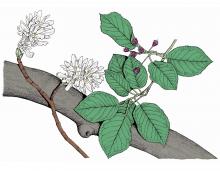
Species Types
Scientific Name
Amelanchier arborea
Description
Downy serviceberry is a tall shrub or small tree found throughout Missouri in open or rocky woods. It is one of the earliest spring trees to bloom, producing showy white flowers. The springtime flowers, the purplish, often sweet berries, and the brilliant fall color make serviceberry an attractive landscaping tree.
Media
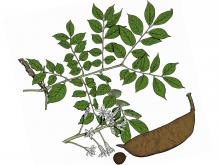
Species Types
Scientific Name
Gymnocladus dioicus
Description
There’s no mistaking Kentucky coffee tree when its large, tough seedpods are hanging from its limbs or dropping to the ground below. Unpopular as food with today’s wildlife, these seedpods might have fed mastodons and other large, extinct North American mammals.
Media

Species Types
Scientific Name
Carya spp.
Description
Hickories are an important part of Missouri’s oak-hickory woodlands and forests. They have tremendous economic value, too. Learn about the nine species of hickory found in Missouri.
Media

Species Types
Scientific Name
Quercus spp.
Description
Oaks are the most important group of trees in Missouri, in both human and ecosystem value. They dominate most of the forests, woodlands, and savannas in the state. Learn more about our 22 species.
See Also
About Trees, Shrubs and Woody Vines in Missouri
There are no sharp dividing lines between trees, shrubs, and woody vines, or even between woody and nonwoody plants. “Wood” is a type of tissue made of cellulose and lignin that many plants develop as they mature — whether they are “woody” or not. Trees are woody plants over 13 feet tall with a single trunk. Shrubs are less than 13 feet tall, with multiple stems. Vines require support or else sprawl over the ground.





















